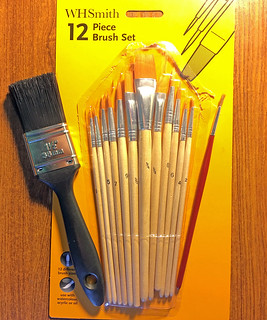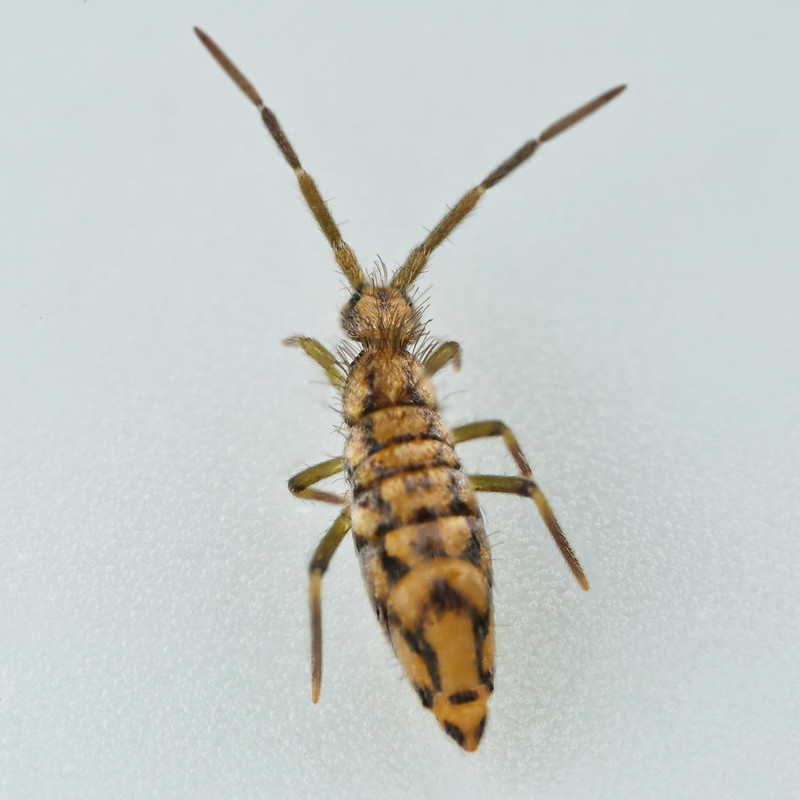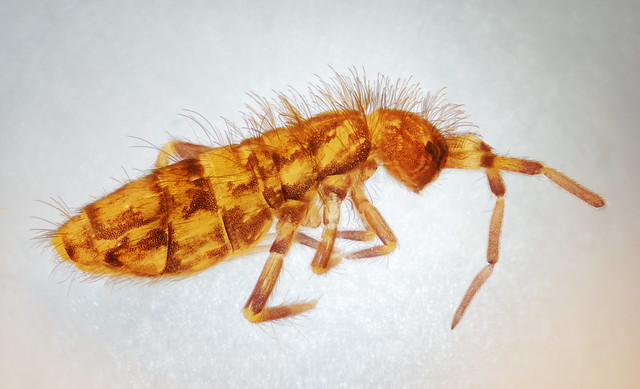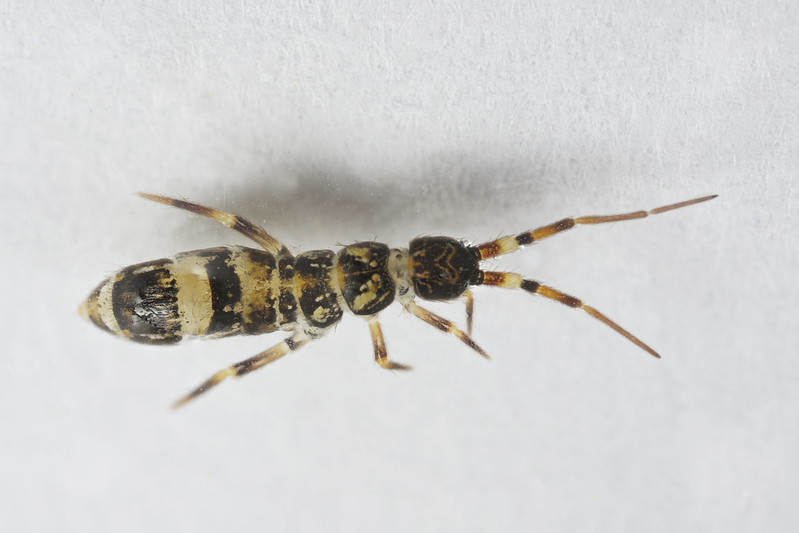 Some species of springtail can reliably be found in certain environments, e.g. Anurida maritima on the seashore, Entomobrya nivalis climbing up vegetation and grazing algae from tree trunks. Entomobrya nivalis is a bogey species for me. Although it is "very common", I've never found it! So I armed myself with my trusty paintbrush and a pot of invisible paint and went off to give the fruit trees in the garden a couple of coats of nothing but air. Getting into all the cracks and under bark flakes I could see the springtails raining down into the white plastic tub I was holding against the tree, and then, since it was flipping cold, I took them indoors to search for the elusive nivalis (more on paintbrushes here).
Some species of springtail can reliably be found in certain environments, e.g. Anurida maritima on the seashore, Entomobrya nivalis climbing up vegetation and grazing algae from tree trunks. Entomobrya nivalis is a bogey species for me. Although it is "very common", I've never found it! So I armed myself with my trusty paintbrush and a pot of invisible paint and went off to give the fruit trees in the garden a couple of coats of nothing but air. Getting into all the cracks and under bark flakes I could see the springtails raining down into the white plastic tub I was holding against the tree, and then, since it was flipping cold, I took them indoors to search for the elusive nivalis (more on paintbrushes here).The first thing I found, fairly predictably, were lots of Entomobrya intermedia. Unlike E. nivalis, E. intermedia is truly common in these parts, but this was an encouraging start.

Entomobrya intermedia
One of the nice things about Entomobrya species is that they can fairly easily be identified from dorsal pigmentation patterns, and thus from photographs. E. intermedia has a characteristic broken “U” (the corners are missing) on abd.5/6 and a “W” across the top of abd.4. So far so good. After wading through all the intermedia, next up was a single specimen of Entomobrya multifasciata:

This species is characterised by the pair of triangular patches of pigment pointing forwards on the posterior margin of abd.4. Unfortunately it can be confused with female Entomobrya nigrocincta (a sexually dimorphic springtail), but I'm confident about this one and also very pleased as this is a new record for my garden. Sadly, at this point it all went a bit pear shaped. Sorting through the smaller specimens, I started to find a lot of these:


This tripped me up and caused a lot of head scratching trying to match up abdominal pigmentation patters with, well anything really. I'd become fixated on Entomobrya and failed to consider the other possibilities - rookie error. It wasn't until I found an adult and with assistance from Frans Janssens that the penny dropped:

Orchesella cincta
Unlike the juveniles I'd been finding, adult O. cincta are much darker - males are completely black (except for the white bands), females are less black and more spotted/patterned. This male is a bit battered and has lost quite a few scales and hairs so it's not a typical specimen but still quite recognisable. What I'd overlooked was that Entomobrya have 4 antennal segments, in Orchesella ant.1 and ant.2 appear to be divided so there appear to be 6 antennal segments (have another look at the juveniles above). The other problem is that all the instars of O. cincta appear different to each other - the first one above is a juvenile, the second one (with more dark pigment) is a subadult, but if you look at the antennae, you can see that they are not Entomobrya. Once again thanks to Frans Janssens for sorting me out.
Not a bad return on a pot of invisible paint! I may apply for Sky Arts Invisible Artist of the Year.
No comments:
Post a Comment
Comments welcome, I will respond as soon as I can.
Note: only a member of this blog may post a comment.